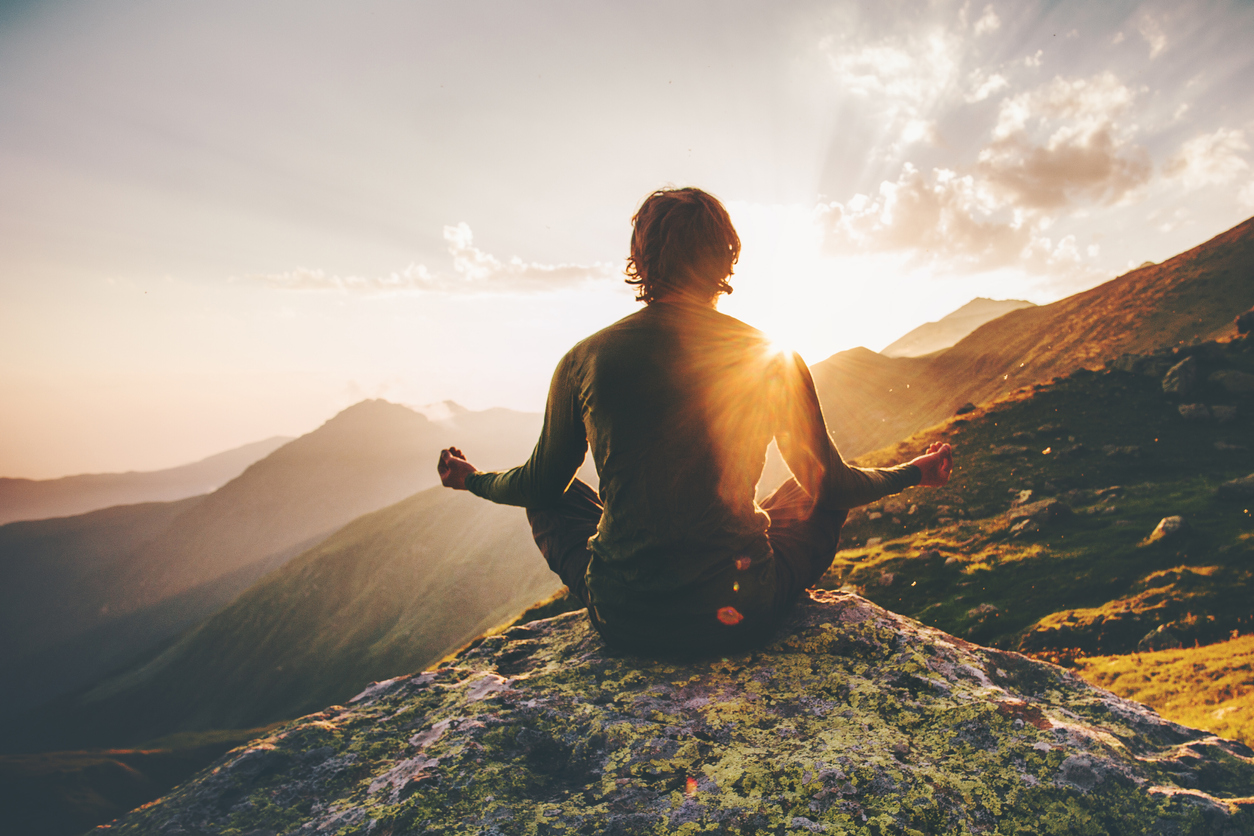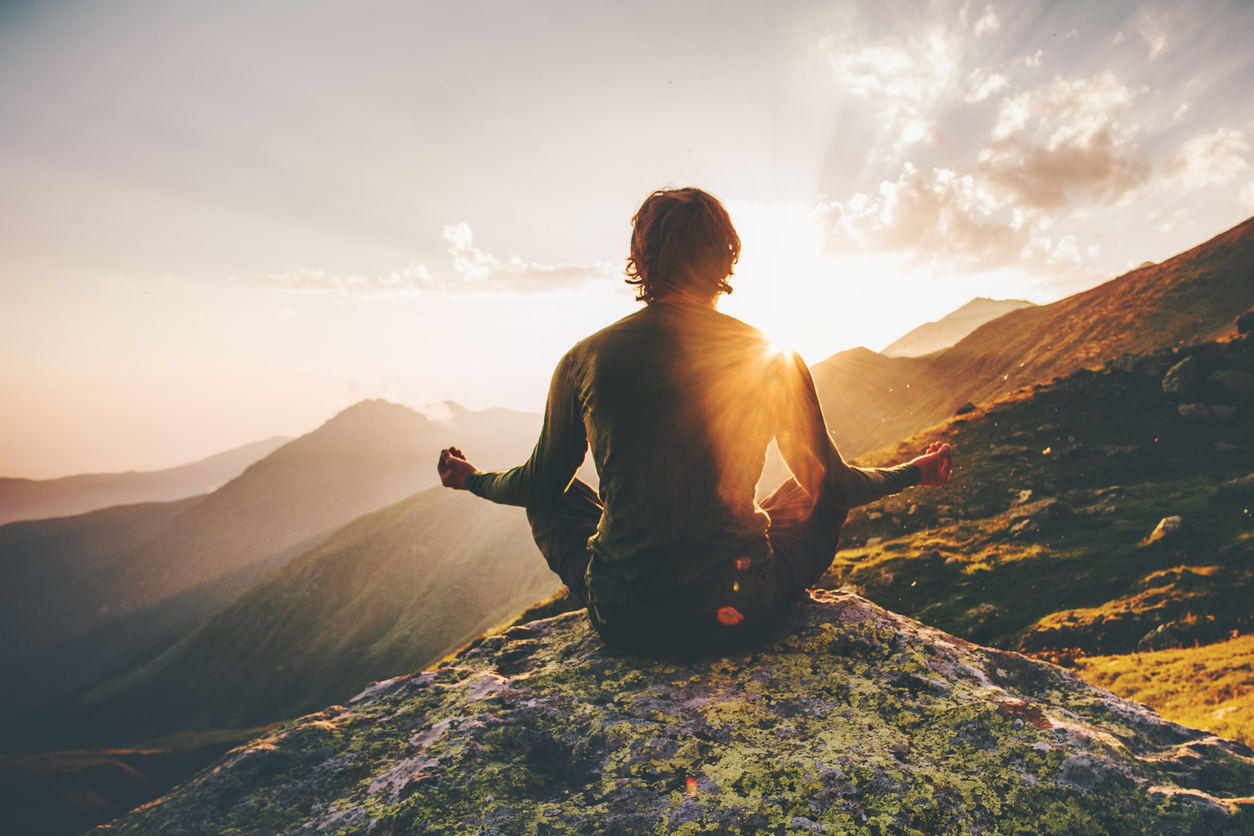
In order to evolve as humans, we must be able to let things go. Whether you are dealing with stress, anger, sadness or any other kind of distress, now is the time to relieve yourself of those negative emotions that are weighing you down. Holding grudges and accumulating feelings of resentment stunts your spiritual growth and ends up being detrimental to your well-being and your practice.
7 Yoga Poses For Letting Go
A new year is coming and there is no room to dwell in the past because there is so much pure and positive energy that you can open your heart and soul to. Let’s take a moment and honor change, regrowth, and the present moment. Yoga is a wonderful way to shift your focus from anything painful that might be occupying your mind to something free and wholesome. The yoga poses below can be practiced in order to form a sequence or individually if you need a moment to recollect your thoughts and take a deep breath to release any lingering bitterness.
1. Balasana (Child’s Pose)
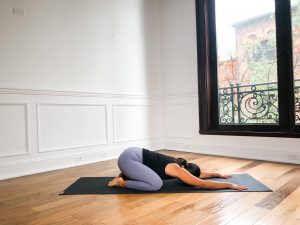
The word “balasana” comes from the Sanskrit words “bala” which means child and “asana” which means pose. This beautiful and humbling asana is often practiced at the beginning and end of sequences.
Child’s Pose is also a wonderful way to rest between challenging asanas and the benefits are numerous. Practice this asana to relax your muscles, stretch your hips, ankles and thighs, release tension in your back and shoulders as well as reduce stress and anxiety.
How to get into child’s pose:
- Begin in tabletop position with your wrists stacked under your shoulders and your knees stacked under your hips.
- Gently shift your weight to your hips and sit back onto your heels trying to bring your big toes to touch each other. Take a deep breath and lower your torso towards the mat extending your arms in front of you or letting them rest by your sides reaching for your heels.
- Bring your forehead to the mat and with every deep exhale, reach even further with your finger tips if they are extended in front of you and ground yourself through your sit bones.
This resting asana is a gentle and humbling act of surrender. Everything will flow in the way it’s supposed to so take a deep breath and let go.
2. Uttana Shishosana (Puppy Pose)

This chest-opening and soothing asana is perfect for releasing built-up tension in your shoulders and neck as well as stretching your spine, back and shoulders.
How to get into puppy pose:
- Begin in tabletop position yet again, with your wrists stacked under your shoulders and your knees stacked under your hips.
- Slowly walk your fingertips in front of you as your torso drops closer towards the mat and shift your upper weight onto your forearms releasing your forehead on the mat.
- Inhale and exhale, and on the exhale, visualize and feel your chest sinking closer and closer to the mat. *Your back should be straight and your glute muscles lifted towards the sky while your upper body melts into the mat (there’s a reason why this pose is also referred to as melting heart pose).
- Make sure that your knees are hip distance apart and your arms are extended and engaged.
- Spread your fingers to improve your balance in this pose and continue breathing deeply and slowly for 1 minute or as long as you feel will benefit you.
This asana will genuinely calm your mind and allow you to immerse yourself in the present moment while focusing on your breathing.
3. Parsva Balasana (Thread the Needle Pose)
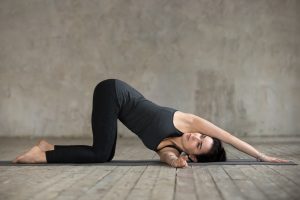
Before exiting puppy pose, let’s transition to this next asana which will stretch your shoulders, arms, chest and back while releasing tension between your shoulder blades. This asana can be a bit tricky to get into so let’s begin in puppy pose.
How to get into thread the needle pose:
- Take a deep inhale and shift your weight to your left arm while gently lifting your right arm off the mat and reaching towards the sky.
- Exhale and slide your right arm underneath your left arm with your palm facing up and rest your cheek on the mat while bringing your gaze to your right hand.
- Hold this posture for anywhere from 15-30 seconds while maintaining deep and steady breathing.
- Once you are ready to switch to the other side, slowly retract your arm from underneath your torso and bring it back in front of you returning to puppy pose; repeat on the other side.
- Once you are ready to completely exit puppy pose, slowly walk your hands back up towards you and lift your hips into tabletop position.
This is a great yoga pose to practice when you need to unwind because it releases tension and stress in the shoulders while offering a gentle twist of the spine.
4. Kapotasana (Pigeon Pose)
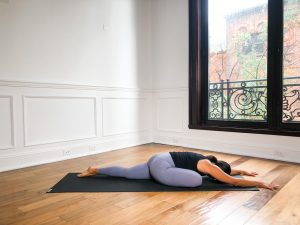
This asana is a perfect way to release stiffness and tension, especially in your hips. This effective hip-opener will allow your hip flexors to lengthen while preparing your body for seated poses and more advanced poses such as backbends. One common reason for tension in your hips is stress and frequent sitting along with a lack of movement and deep stretching. Muscular tension as well as emotional tension are often trapped in this part of the body. Pigeon Pose is meant to stretch your hip rotators allowing that built-up to be released while giving you the chance to confront your upsetting emotions and finally set them free.
How to get into pigeon pose:
- Begin in tabletop position yet again with the correct alignment and slowly bring your right knee forward close to your right hand.
- Straighten your left leg allowing it to rest on the mat and shift your weight onto your right thigh bringing your forehead to the mat.
- Allow your arms to extend in front of you while you sink deeper and deeper into this asana with every deep exhale.
- When you are ready, return to tabletop position and repeat this pose on the opposite side. Embrace the feeling of release; let go of each negative emotion as it surfaces.
5. Marjariasana-Bitilasana (Cat-Cow Pose)
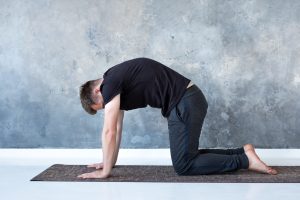

These two asanas go hand in hand; cat pose is excellent for stretching your spine and shoulders as well as strengthening your core while cow pose deeply stretches your shoulders, lower back, chest and spine.
- Begin in tabletop position with your wrists stacked under your shoulders and your knees stacked under your hips and as you take a deep inhale, arch your spine allowing your belly to drop towards the mat and bring your gaze forward in cow pose.
- As you exhale, round your spine pulling your belly into your spine and bring your gaze down towards the mat in cat pose.
- Alternate between the two asanas controlling your breathing, inhaling and exhaling deeply and with intention.
- Now, exhale releasing all of that energy and allowing it to escape your being since it no longer has a purpose in your life. Allow yourself to entirely let go.
Pranayama (The Regulation of Breath)
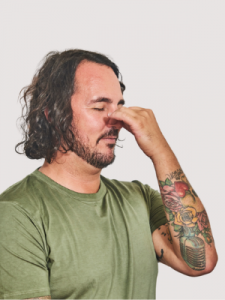
Sometimes, this simple asana is all you need. Regulating the breath while you’re seated in a comfortable position, is the perfect way to meditate. It lengthens your spine and allows energy to flow through your body freely. It also provides various benefits such as strengthening the back and stretching the ankles, knees, and thighs and improving posture.
A simple way to meditate through Pranayama:
- Begin in seated position with your sit bones grounded into the mat.
- Visualize roots attached to your hips running deep into the earth like a tree and with every breath. Sense yourself feeling more and more grounded.
- Try to keep your spine as straight as possible and cross your legs tucking your feet underneath your knees.
- Gently place your hands in your lap or on your knees and close your eyes, bringing your entire focus to your breath. Nothing else matters except this present moment, right here, right now. Let go of any doubts or reservations as everything in this beautiful cosmos has a purpose.
7. Savasana (Corpse Pose)
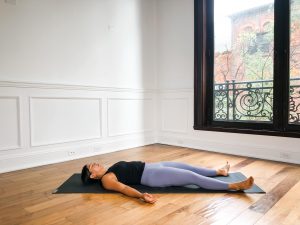
This deeply relaxing asana provides a multitude of benefits:
- It calms your nervous system
- It energizes your mind
- It soothes your body
Savasana is often practiced at the end of a yoga practice because it allows your body to rest and immerse itself in the benefits of that practice.
How to get into Savasana:
- To enter this pose, begin by laying on your mat with your legs extended in front of you and bring your arms to your sides with your palms facing up.
- Roll your shoulders back and release any tension in your face, completely letting go of any lingering feelings of stress that might be occupying you.
- Shift your focus to your breath as you inhale deeply and exhale any remaining negative energy that you might be experiencing.
Feel yourself surrendering and letting go all that tension that no longer serves you. Imagine your body sinking through your mat into the ground and to the center of this beautiful planet. Re-center and feel the benefits of all the asanas that you have previously completed and with each exhalation. Feel the weight of your body sinking into the mat.
Practice the art of letting go in your own way…
Allow the feeling of gratitude to flow through your entire body like an ocean wave, in through your head and out through your fingertips and toes. Thank yourself for taking the time today to do something for your well being and sense of peace. Stay in this asana for 5-15 minutes or as long as you need in order to feel completely relaxed while receiving all of the wonderful benefits of Savasana. Surrender to the ground underneath your mat. Let go.


